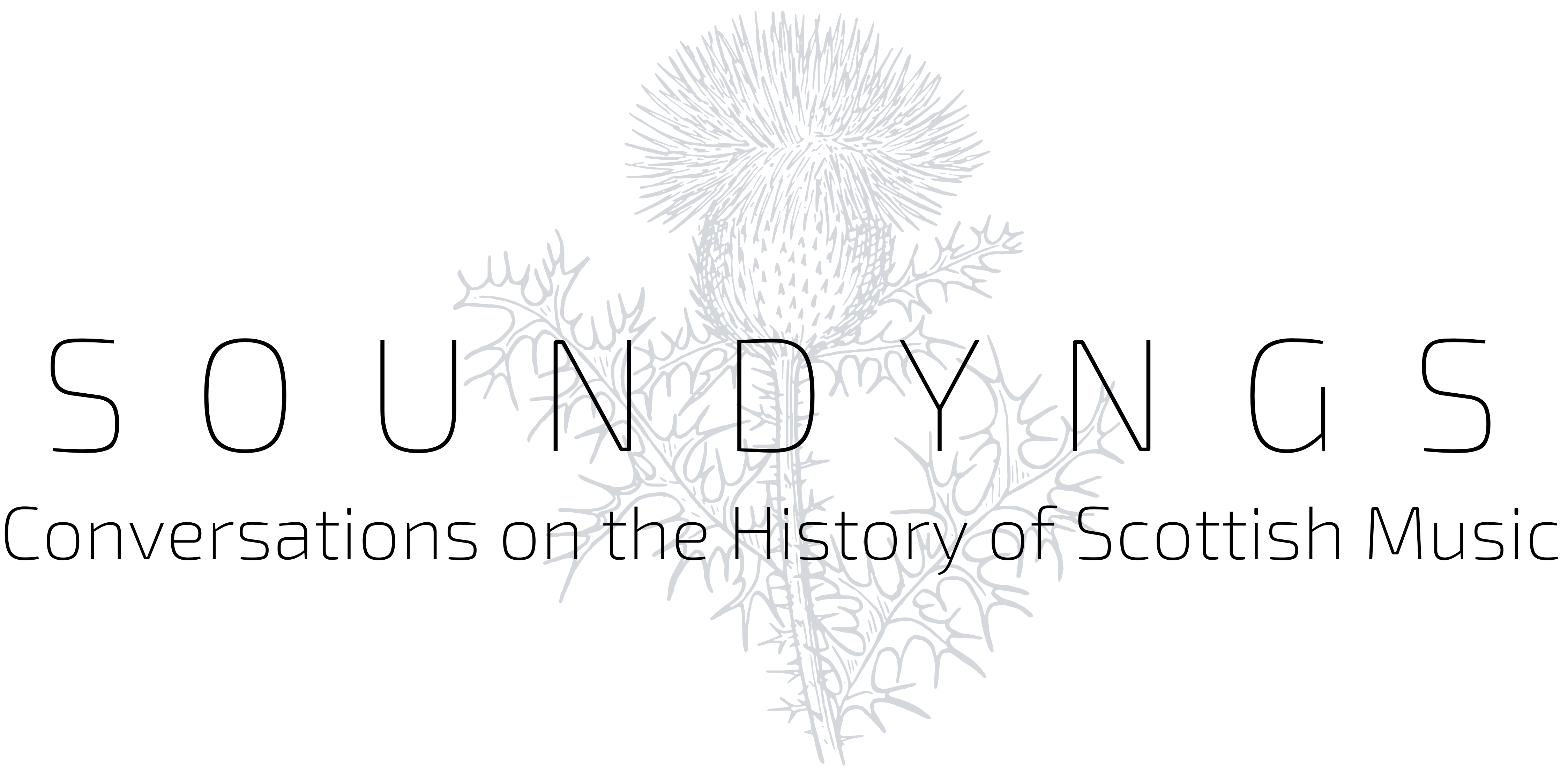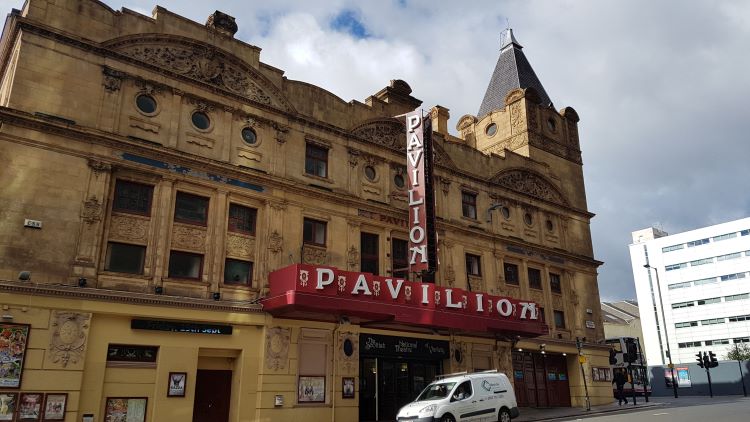Image attribution: Stinglehammer, CC BY-SA 4.0 <https://creativecommons.org/licenses/by-sa/4.0>, via Wikimedia Commons
This weekend, it was reported in the Scottish press that the Martin brothers, owners of the Pavilion Theatre, were seeking a buyer for this iconic venue. (See STV news)
The Pavilion, situated on Renfield Street, is Glasgow’s last fully private, non-subsidised, commercial theatre. In an age when most theatres rely on substantial public grants to operate, the Pavilion is a legacy of the days when live theatrical entertainment could rely on ticket sales to support running costs. It opened in 1904 as a Music Hall, and its survival throughout the 20th century, when first cinema and then night clubs and arenas competed with and mostly replaced the Music Hall as mass entertainment venues, is a testament both to the business acumen of its owners and managers, and the place it has held in the hearts of Glasgow people. Its current manager, Iain Gordon, has been in post for an extraordinary 44 years, and promises that for Christmas 2022 at least, the pantomime production (The Magical Adventures of Aladdin, if you are curious) will go ahead. Pantomime – a genre of popular theatre peculiar to the British isles – lies at the heart of the Pavilion’s longevity.
But post-covid, even cinemas are closing, and clearly the Pavilion has found the last couple of years particularly challenging. Approaches have been made to the Ambassador Theatre group, which owns Glasgow’s Kings Theatre and Theatre Royal as well as venues in London’s West End. While negotiations are still ongoing it’s worth considering what Music Halls such as the Pavilion have contributed to popular culture in Scotland’s cities.
When it opened, it was only one of several music halls in Glasgow. These venues were plush, with gilded and padded seats, offering the more steadily waged amongst the working classes entertainment from international artists as the singer Marie Lloyd, as well as Scottish talents such as the comedian and singer Harry Lauder. The Pavilion even had a ‘before he was famous’ visit from Charlie Chaplin. But arguably, it was Scottish talent which lay at the core of the Pavilion’s performances, with all-ages family entertainment increasingly prominent on the bill. With a capacity of just under 1500 seats, the Pavilion ran shows on most evenings of the week in the Christmas season, and often matinees.
Music Hall variety acts were the late 19th and early 20th century’s equivalent to stand up comedy. Combining music with jokes and sketches, its short-form, character-based format allowed audiences all over Britain to enjoy a common circulation of jokes and scenarios, relatable to their own lives. These also promoted common stereotypes of family relationships and even racial types in a manner that would not find acceptance today, but which profoundly shaped working-class identity in its hey-day. Hugh MacDiarmid’s criticism of the impact of Harry Lauder’s stereotypical Scotsman in A Drunk Man Looks at the Thistle (1926), although scathing about the reductive tendency of these portrayals, nevertheless placed Lauder amongst the first rank of his list of influential Scottish historical cultural icons, and is testament to the profound impact of Music Hall on the Scottish national identity by the 1920s:
I felt it turn, and syne I saw
John Knox and Clavers in my raw,
And Mary Queen o’ Scots ana’,
And Rabbie Burns and Weelum Wallace,
And Carlyle lookin’ unco gallus,
And Harry Lauder (to enthrall us).
Hugh MacDiarmid, from “A Drunk Man Looks at the Thistle” from Selected Poetry. Copyright © 1992 by Alan Riach and Michael Grieve.
Despite MacDiarmid’s critique, there was a positive side to Music Hall. For working class people all over Britain, the topics handled in places like the Pavilion included many that recognised the facts of their lived experience – poverty, work, drink, difficult marriages and more. While patriotic songs fed into and sustained working class interest in imperial identities which today are under critical examination, they also helped sustain local, civic identities when times were hard, particularly through the hard times of the 1920s and 30s. An artist who didn’t connect with the live audience would know so instantly, and one who did would become an overnight local hero and attract audiences into the city.
Music Halls were also often places where early-stage local singers and comedians learned to perform to audiences. There was space for the young and the amateur as well as for established professional names. Anecdotes in Vivien Devlin’s Kings, Queens and People’s Palaces mention music hall talent shows allowed local children to display Highland and Scottish dancing (p.9), providing a performance outlet for this outside of more formal exams and competitions, and no doubt encouraging practice and interest in this area of traditional music. A history of Scottish dance choreography might look into how traditional steps responded to the cross-fertilisation of ideas from show dances!
However, what sustained the Pavilion in the later 20th century and into this one – and indeed, what is still a major income item for many provincial theatres – was pantomime. These all-ages shows, typically put on over the Christmas holiday period, combine traditional fairy tales with topical and local jokes and references, and stage set-pieces. The stage-craft of pantomime combines the improvised comedy of Italian Commedia dell’arte with indigenous traditions of touring troupes of entertainers. The Victorians commercialised this, yoking it to Christmas and fairy tales. Pantomime in the late Victorian period included kind of burlesque, with a cross-dressing girls playing ‘the Best Boy’ romantic lead, and an older man dressed as a woman playing an older motherly figure, the ‘Dame’. In Scotland, ‘Dames’ such as Stanley Baxter survived into television comedy. Pantomime jokes were broad, and often taking a satirical sweep at local public figures and businesses, and the government of the day. And audience participation was essential: many Scottish families share memories of shouting ‘he’s behind you’ (as the villain arrives) or an audience-division into factions of ‘oh no it isn’t’ and ‘oh no it is’ at some random moment of plot twist.
Behind the scenes, the Pavilion had its share of historical controversies and work-related tragedies and near-misses. In 1904, shortly after it first opened, the then manager was charged over a potential risk to public safety following audience complaints from those not able to see the stage, because an extra 240 people had been allowed to stand in the audience, overflowing the seating capacity (see Edinburgh Evening News, April 13, 1904, issue 9694). On this particular occasion, the extra bodies included many from England who were up in Glasgow for an international football match and who were determined to enjoy everything Glasgow had to offer. On that occasion, no harm resulted. However, in 1937, an inquest found the theatre’s fire safety procedures had failed to protect a chorus girl in that season’s pantomime, whose skirts had gone up in flames (reported in several national newspapers including the Dundee Courier of Friday February 19 1937, issue 26119 p.3) And more recently, this, famously, was the theatre that saw Janette Tough – the cross-dressing ‘little boy’ half of the variety act The Krankies – falling from the beanstalk in the Christmas 2004 pantomime, if not to her death, then still to her serious injury and a prolonged period in hospital (The Daily Telegraph, Thursday 16 December, 2004, issue 46506).
But to date, the Pavilion Theatre has survived, often drawing on ingenious make-do solutions when times were tough. The Aberdeen Journal reported in 1950 that when the theatre orchestra for the pantomime joined the national Musicians Union strike, local pianists were drafted in to produce the music using a Hammond organ (I wonder if this still exists somewhere in the building today?) (Tuesday Feb 21, 1950, Aberdeen Journal issue 29684). It is to be hoped that a good solution emerges for taking this historic venue forward into the 21st century – safe and intact for all.
Further Reading
- Richard Anthony Baker, British Music Hall: An Illustrated History (Barnsley: Pen & Sword, 2014)
- Vivien Devlin, Kings, Queens and People’s Palaces: An Oral History of the Scottish Variety Theatre, 1920-1970 (Edinburgh: Polygon, 1991)
- Paul Maloney, Scotland and the Music Hall, 1850-1914 (Manchester University Press, 2003)
- Paul Maloney, The Britannia Panopticon Music Hall and Cosmopolitan Entertainment Culture (Palgrave Macmillan, 2016)

